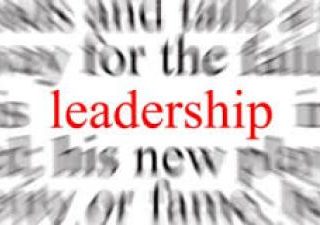
Leadership is a big, hairy topic.
With so much content available, so many experts, so many opinions, philosophies models and theories, it really can be hard to know where to start.
The support the ‘Path to Leadership’ program, we’ve put together a selection of stimulus pieces – content that introduces important leadership concepts.
Some of these will really resonate with you – they might play a key role in the development of your leadership journey. Others may not hit the mark for you at all.
That’s one of the marvellous things about leadership development – we are all attracted to different ideas, different paths to our best-self.
It’s important to note, Team Guru is not in any way attempting to pass this work of as our own.
In fact, the whole point is that they are not our ideas. Inspiration and information about leadership can be found in so many places. There is a vast volume of work on this great discipline. This compilation is designed to get you started on your Path to Leadership.
1. Manager v Leader
Vineet Nayer helps us to understand the vital difference between being a ‘manager’ and a ‘leader’. This understanding is vital as we plan a deliberate and conscious path towards healthy leadership.
2. Five Forms of Power
French and Ravens model highlights the need for a leader to understand from where they draw their power to lead. Managers can rely on the direction of the org chart – leaders must give those around them a reason for following

3. Emotional Intelligence
Daniel Goleman’s Emotional Intelligence is seen by many as a watershed piece of work in the leadership and personal effectiveness discipline. Goleman describes why IQ is not the only determining factor for leaders and outlines the 5 domains of Emotional Intelligence
4. The Leader who had no Title
Robin Sharma’s book presents key leadership principles in a business fable format. Sharma takes his readers on a journey with a the main character as he meets 4 ‘leaders’. Each of these unconventional leaders teaches us important lessons about the path to true leadership
5. Situational Leadership
Develop by Blanchard and Hersey, Situational Leadership provides a framework to help us understand that successful leaders change their style according to the maturity of the people they’re leading and complexity of the task being described
6. Strengths-based Leadership
Tom Rath and Barry Conchie describe a philosophy that focuses on the strengths of individuals rather than attempting to develop their weaknesses. They describe the benefits of such a philosophy and identify potential pitfalls to be avoided
Strengths-Based Leadership – pdf
7. Tribal Leadership
Logan, King and Fischer-Wright encourage us to see our organisations as a network of naturally forming tribes. They outline 5 broad types of tribes, identify their characteristics and provide guidance on stepping up to the next level of maturity
8. Managerial Grid
The Blake Moulten Managerial Grid helps us to understand personal and organisational tendencies. The grid is based on two behavioural dimensions: concern for people and concern for production
Managerial Grid – Blake and Moulten – pdf
9. Motivators and Hygiene
Herzberg helps us to understand that the things that make people dissatisfied with their work are not the opposite of the elements that bring professional satisfactions
Motivators and Hygiene – Herzberg – pdf
10. Values-based Leadership
Harry M Jansen Kraemer Jr argues that the only true leadership is values-based leadership. He provides four principles of values-based leadership

Group Discussion
In your groups, select 3 or 4 people to present back to the main group.
Feel free to develop support material and to research your topic more broadly to enrich your presentation.
- Describe the vibe – what are the key messages of your topic?
- Are you down with that? Does it resonate with you – something that will assist you on your leadership journey? How? Why not?
- What value do these ideas bring to leadership development?
- What are the shortfalls?
- Where does it fit within our description of the leadership journey?
- Which leadership principles can this idea partner with to be of greater value?



